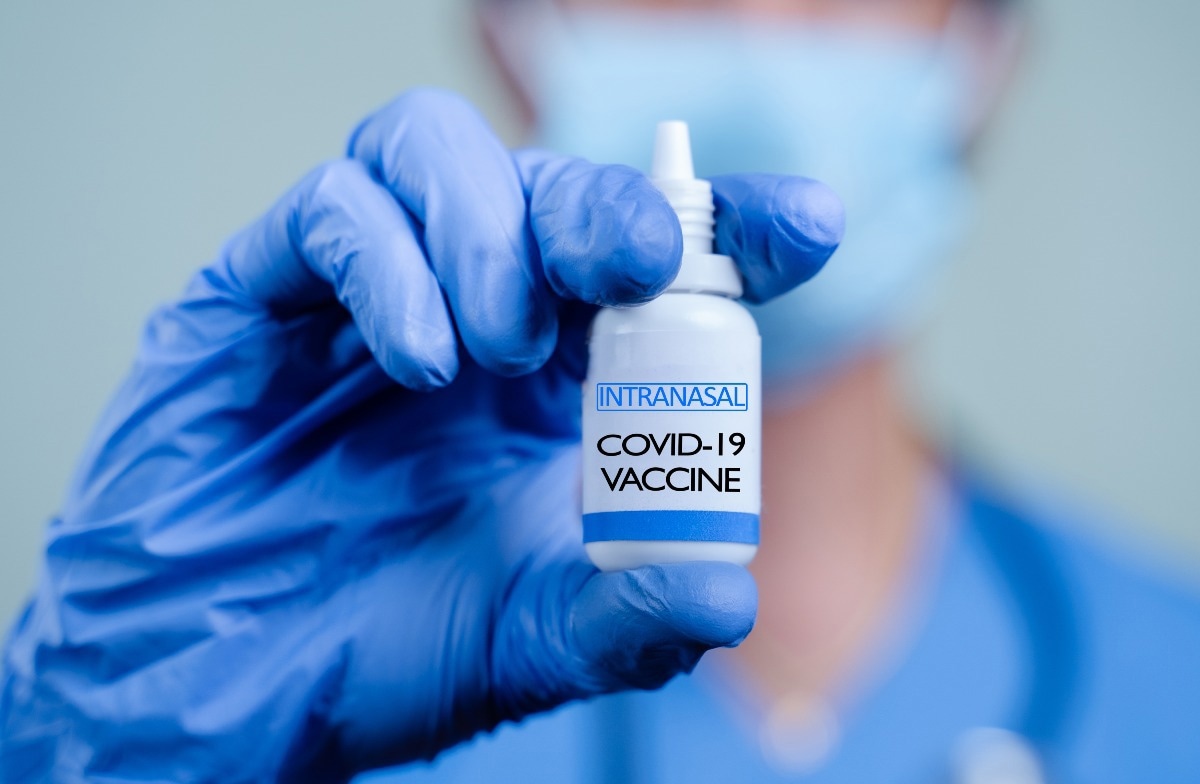A recent study published in Pathogens reported that an intranasal severe acute respiratory syndrome coronavirus 2 (SARS-CoV-2) vaccine induced mucosal immune responses in mice.
 Study: Intranasal Immunization with Liposome-Displayed Receptor-Binding Domain Induces Mucosal Immunity and Protection against SARS-CoV-2. Image Credit: WESTOCK PRODUCTIONS/Shutterstock
Study: Intranasal Immunization with Liposome-Displayed Receptor-Binding Domain Induces Mucosal Immunity and Protection against SARS-CoV-2. Image Credit: WESTOCK PRODUCTIONS/Shutterstock
SARS-CoV-2 vaccines are administered via the intramuscular (I.M.) route and elicit systemic immune responses. It is debated whether I.M. vaccine administration induces substantial mucosal immunity. mRNA-based vaccines against SARS-CoV-2 induce weak mucosal responses.
In general, prophylactic I.M. vaccination results in antibody responses, predominantly serum immunoglobulin G (IgG), and lacks immune responses at the site of infection. On the other hand, intranasal (I.N.) immunization could protect against infection in upper airways with potent local IgA responses. Several reports indicate that I.N. administration of vaccines generates protective immune responses.
Previously, the authors described liposomes comprising cobalt (Co) porphyrin phospholipids (PoPs). CoPoP liposomes could be formulated with lipid adjuvants such as 3D6A-PHAD. These liposomes could be used to transform soluble antigens into antigenic particles and induce robust immune responses. Besides, these liposomes allow the binding of His-tagged peptides/proteins due to the interactions between cobalt and the His-tag.
The study and findings
In the present study, researchers demonstrated that I.N. administration of SARS-CoV-2 spike’s receptor-binding domain (RBD)-displaying immunogenic liposomes could generate robust antigen-specific IgA and cellular responses in the lungs of mice.
First, the His-tagged SARS-CoV-2 RBD antigen was mixed with CoPoP/3D6A-PHAD liposomes to produce CP/RBD, a liposome-displayed RBD. K18 mice expressing human angiotensin-converting enzyme 2 (hACE2) were either I.N. or I.M. administered with CP/RBD on days 0 and 14 at three different concentrations of RBD (0.5, 1, or 2 μg).
Lung homogenates were collected 28 days after immunization. I.M. immunization failed to induce detectable anti-RBD IgA titers in the lungs, whereas I.N. immunization elicited robust IgA titers. However, anti-RBD IgG responses in the lungs were evident with either mode of vaccination. Notably, I.M. immunization induced a significantly stronger serum IgG response than I.N. immunization.
Further, a surrogate virus neutralization test (sVNT) was performed using lung homogenates and serum samples. Lung homogenates from mice with I.N. immunization inhibited 96% of the RBD-ACE2 interaction at a 2 μg dose of RBD. In contrast, I.M. immunized mice inhibited 71% of RBD-ACE2 interaction at the same RBD dose.
On the other hand, sera from I.N. or I.M. immunized mice inhibited 92% of interactions between RBD and ACE2 at a 2 μg dose of RBD. Next, an interferon-gamma (IFNγ) ELISPOT assay was performed to detect RBD-specific T lymphocytes after restimulating lung and spleen cells with RBD. I.N. immunization of mice resulted in a higher number of spot-forming cells (SFCs) in the lungs than I.M. immunization. In contrast, I.M. immunization of mice increased the frequency of SFCs in the spleen.
Furthermore, the authors investigated whether the administration of CP/RBD liposomes resulted in their uptake by immune cells in the lungs. To this end, they engineered a Co-free PoP (CPP) as a fluorescent tracer. The uptake of the CPP/RBD liposomes by antigen-presenting cells (APCs) was evaluated 24 hours after administration.
The team observed the uptake of CPP/RBD particles by dendritic cells and macrophages. Additionally, mice were immunized I.N. or I.M. with 0.5 μg of CP/RBD on days 0 and 14 and challenged I.N. with a lethal SARS-CoV-2 dose (105 plaque-forming units). Two- and four days post-infection (dpi), mice were euthanized and assessed for viral loads in the lungs and nasal turbinates.
Viral loads in CP/RBD-administered mice were significantly lower than in control mice treated with phosphate-buffered saline (PBS). Notably, I.M. immunized mice had undetectable viral loads after two and four days of infection. A 100% survival rate without weight loss was observed in immunized mice regardless of the mode of administration.
Conclusions
I.N. administration of vaccines is convenient and could potentially stimulate mucosal immunity. Antigen-specific antibodies could inhibit viral infection in the respiratory tract at the entry site. The authors showed that CP/RBD administration via I.N. mode induced anti-RBD IgA in the lungs, while I.M. immunization did not elicit IgA responses.
Conversely, I.M. immunization induced a more robust serum IgG response than I.N. immunization. Altogether, the findings illustrated that I.N. administration of SARS-CoV-2 RBD displayed on liposomes was protective against a lethal viral challenge in mice; it also lowered the viral load in nasal turbinates and the lungs.